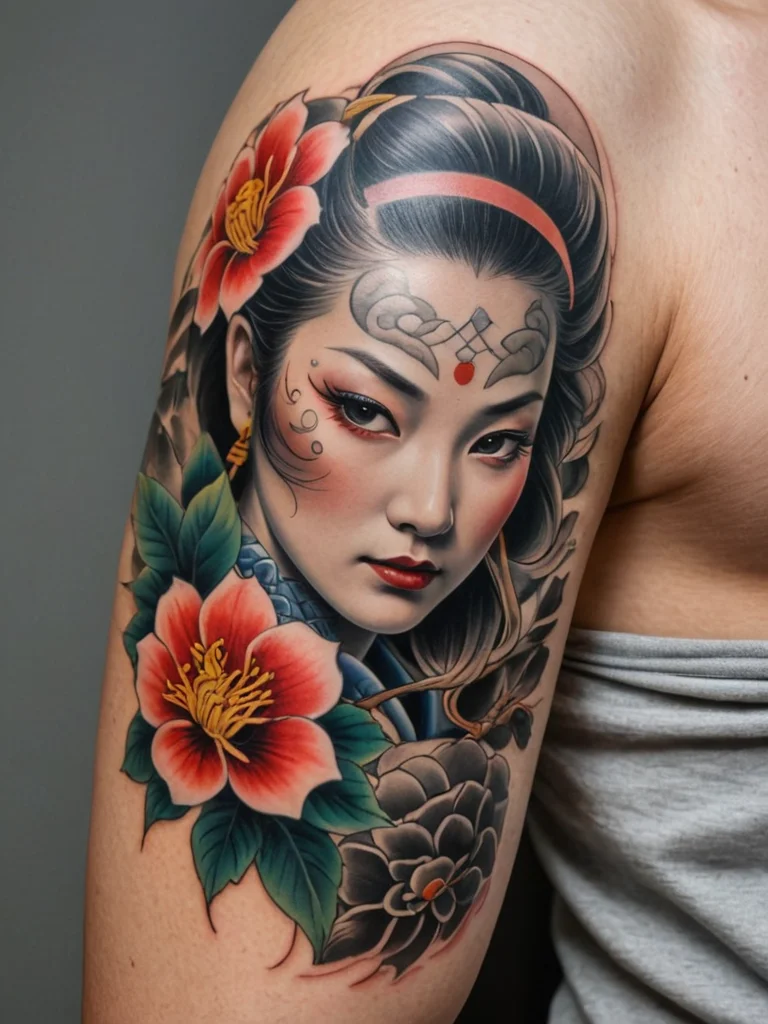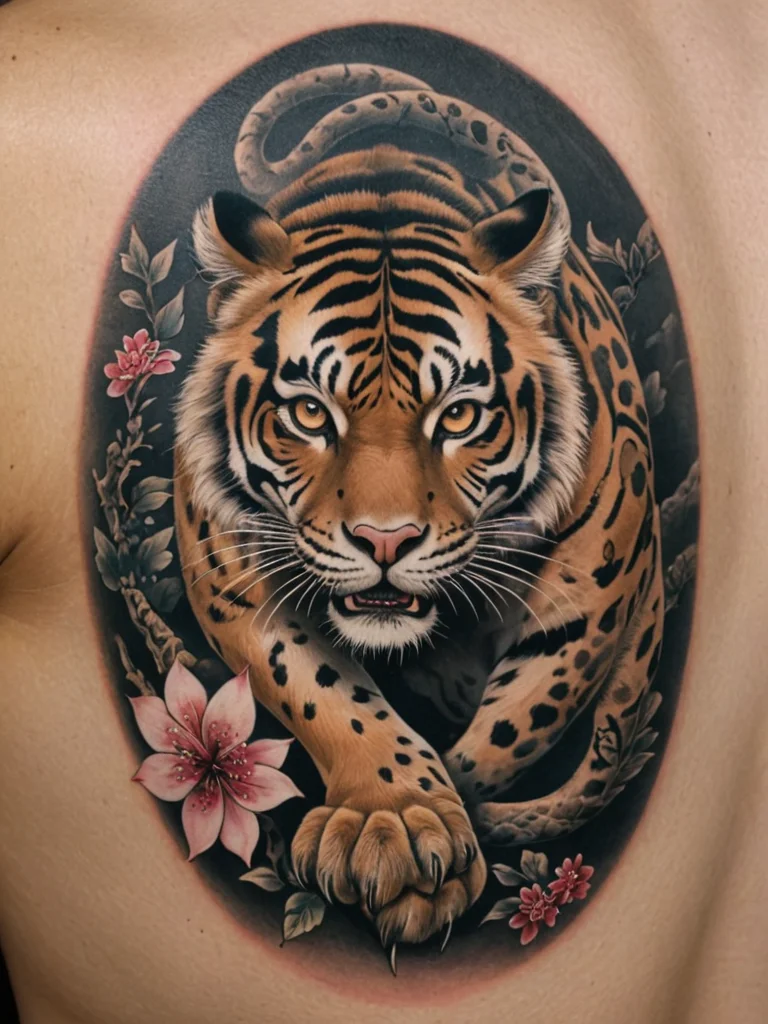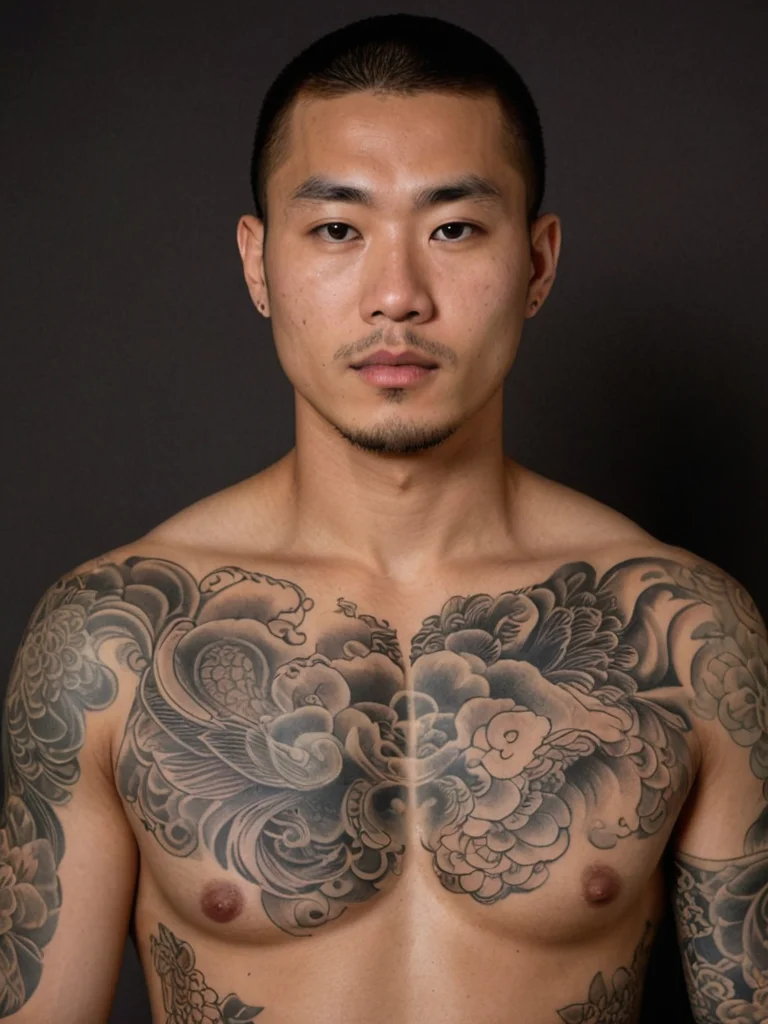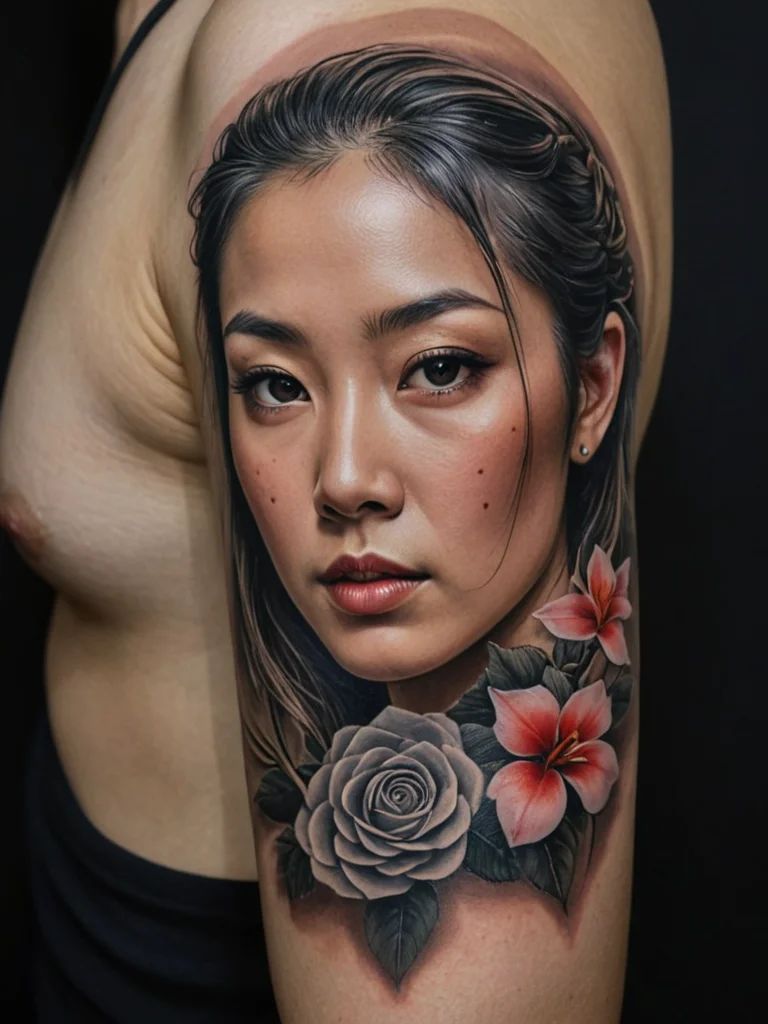Irezumi, the traditional Japanese art of tattooing, is more than just body art; it’s a profound cultural practice steeped in centuries of history, symbolism, and societal evolution. Understanding the historical journey of Irezumi allows us to appreciate the depth and resilience of this intricate craft. While many are drawn to the powerful imagery and meanings behind these tattoos, delving into their historical context reveals how Irezumi has been shaped by, and has in turn shaped, Japanese society. From its ancient origins to its modern global recognition, the story of Irezumi is a testament to the enduring power of human expression and artistic tradition. As you explore the world of Japanese tattooing, recognizing its historical trajectory will undoubtedly enrich your understanding and admiration for this unique art form.
The ancient roots of irezumi in pre-modern japan

The origins of tattooing in Japan stretch back to ancient times, long before the intricate designs we associate with Irezumi today became commonplace. Archaeological evidence, including clay figurines (dogū) from the Jōmon period (c. 14,000–300 BCE) and burial sites from later periods, suggests that early forms of body marking were practiced. These markings, often found on pottery and statues, are interpreted by scholars as ritualistic or symbolic, possibly denoting social status, tribal affiliation, or spiritual protection. The earliest written accounts, such as those found in Chinese historical texts from the 3rd century CE, also mention Japanese people decorating their bodies with patterns and colors. These descriptions paint a picture of a society where body modification held significant cultural importance, likely linked to spiritual beliefs and community identity. While these early practices were far removed from the elaborate bodysuit tattoos of later eras, they laid the foundational understanding of using the body as a canvas for cultural expression. It’s believed these initial markings served to ward off evil spirits, attract good fortune, or signify achievements within the community. The very act of adorning the skin was an intrinsic part of the cultural fabric, reflecting a deep connection between the physical self and the spiritual or social world.
During the Yayoi period (c. 300 BCE–300 CE), evidence of tattooing continued, albeit with more specific interpretations. Funerary objects and human remains from this era often display evidence of facial and body tattoos. These markings seem to have been more formalized, possibly indicating rank or achievements, such as successful hunting expeditions or spiritual roles within the village. The style and placement of these early tattoos likely varied significantly by region and social group. It’s important to distinguish these ancient practices from the later development of Irezumi; they were simpler, often more functional, and served purposes that are understood through archaeological interpretation rather than direct historical documentation of meaning. These early traditions represent the nascent stages of a long-standing cultural engagement with the art of tattooing, setting the stage for the more complex artistic expressions that would emerge centuries later. The gradual refinement of techniques and the deepening of symbolic significance over these millennia highlight a persistent human drive to mark and adorn the body as a reflection of inner and outer life.
From shame to status: irezumi’s evolution through the edo period

The Edo period (1603–1868) marked a pivotal era in the history of Japanese tattooing, witnessing its transformation from subtle markings to the elaborate, full-body artworks that are recognized as Irezumi today. During this time, Japan experienced a period of relative peace and prosperity, which allowed for the flourishing of arts and culture, including tattoo artistry. Initially, tattooing was employed as a form of punishment. Individuals convicted of certain crimes would receive indelible marks, often simple characters or symbols, on their faces or forearms. This practice served as a visible deterrent and a permanent brand of shame, ostracizing the individual from respectable society. However, ironically, this punitive use inadvertently contributed to the development and refinement of tattooing techniques.
As tattooing became associated with punishment, those who sought to erase or overcome this stigma, or perhaps those who found a new identity in their marked status, began to develop more elaborate designs. Firemen (hikeshi) of the Edo period are particularly notable for their role in the popularization of Irezumi. These brave individuals, who battled devastating fires, often wore tattoos as a form of protective armor, both physically and spiritually. Their tattoos typically depicted heroic figures, mythical creatures, or water-related imagery, believed to offer protection against the flames. The designs were often bold and visually striking, covering large areas of the body. Tattoo artists, known as *horishi*, honed their skills by working on these groups, developing the characteristic aesthetic and techniques that define modern Irezumi. The communal nature of the firemen’s tattoos fostered a sense of brotherhood and shared identity, elevating the art form beyond mere punishment.
Furthermore, the rise of the merchant class and the burgeoning urban culture of Edo (modern-day Tokyo) provided a new context for tattooing. While the samurai class was bound by strict codes of honor and appearance, merchants, who accumulated wealth but lacked the hereditary status of warriors, often sought alternative ways to express themselves and assert their identity. They began to commission elaborate tattoos, frequently depicting scenes from popular literature, kabuki plays, or heroic tales. These full-body suits, often called *munewari* (chest-wrap), were discreetly hidden beneath clothing, allowing the wearer to display their wealth, courage, and aesthetic sensibilities in a private yet profound way. The *horishi* became masters of their craft, developing the distinctive style of Japanese tattooing characterized by bold outlines, vibrant colors, and seamless integration with the body’s contours. This period saw the art form evolve from a mark of shame to a sophisticated expression of personal identity, courage, and artistic appreciation, laying the groundwork for its enduring legacy.
The dark ages: irezumi under prohibition and its criminal association

Following the Meiji Restoration in 1868, Japan underwent rapid modernization and sought to present a polished image to the Western world. This desire for international acceptance led to the prohibition of tattooing. The new government viewed tattoos, particularly the elaborate Irezumi, as barbaric and uncivilized, associating them with the lower classes, criminals, and the underworld. In 1872, the government officially banned tattooing, making it illegal to practice and possess tattoos. This prohibition drove the art form underground, forcing artists and wearers alike to operate in secrecy. Tattoo artists, once respected artisans, were forced to work in hidden establishments, often catering to a clientele that defied societal norms.
The criminal association of Irezumi became deeply entrenched during this period of prohibition. The yakuza, Japan’s organized crime syndicates, adopted Irezumi as a significant part of their cultural identity. For yakuza members, the elaborate tattoos served multiple purposes: they demonstrated a high tolerance for pain, signifying toughness and commitment; they acted as a badge of honor and group affiliation; and they provided a sense of invincibility, as the tattoos were often hidden beneath clothing, reserved for the eyes of fellow members and those initiated into their world. The yakuza’s embrace of Irezumi further cemented its negative perception in the eyes of mainstream Japanese society, reinforcing the idea that tattoos were solely the domain of criminals and outcasts. This association created a deep societal divide, where those with tattoos were often judged and discriminated against, facing difficulties in employment and social acceptance.
Despite the legal ban and the negative societal stigma, the art of Irezumi continued to survive and evolve, albeit in the shadows. Dedicated *horishi* kept the tradition alive, passing down their skills and knowledge through clandestine apprenticeships. The techniques and aesthetics of Irezumi were refined even further during this era, as artists pushed the boundaries of their craft, often using more sophisticated tools and pigments. The persistence of Irezumi under prohibition speaks volumes about its cultural significance and the resilience of its practitioners. While the practice was officially condemned, it remained a powerful form of personal expression and cultural identity for those who chose to bear the marks. The very act of getting tattooed during this time was an act of rebellion, a bold statement against societal norms and governmental authority, further imbuing the tattoos with a sense of defiance and deep personal meaning for their wearers.
Modern revival: irezumi’s re-emergence and global influence

Following World War II, the strict prohibition on tattooing was eventually lifted, though the negative societal perceptions lingered for many years. The American occupation of Japan played a complex role in this transition. While American soldiers and sailors often sought out Japanese tattoos, contributing to a renewed interest, the association of Irezumi with the yakuza continued to cast a long shadow. Tattooing began to re-emerge into public spaces, but it remained largely a subcultural practice, with many establishments operating on the fringes of legality or societal acceptance. The stigma associated with tattoos meant that mainstream Japanese society was slow to embrace Irezumi as a legitimate art form.
However, in recent decades, there has been a significant shift in how Irezumi is perceived, both within Japan and internationally. Increased exposure through media, art exhibitions, and the global popularity of Japanese culture has led to a broader appreciation for the intricate beauty and historical depth of Irezumi. Tattoo artists around the world have been inspired by the Japanese style, adopting its techniques, motifs, and philosophical approach to body art. This global fascination has, in turn, influenced contemporary perceptions within Japan. Younger generations are increasingly open to tattoos, viewing them less as a mark of criminality and more as a form of personal expression and artistic appreciation. The traditional motifs and bold aesthetics of Irezumi are being reinterpreted by modern artists, blending historical techniques with contemporary design sensibilities.
Today, Irezumi is recognized as a significant cultural heritage and a highly respected art form. While challenges and preconceptions still exist, the art of Japanese tattooing has achieved a remarkable revival. It is celebrated in international tattoo conventions, academic studies, and art galleries, showcasing the skill and dedication of contemporary *horishi*. Many artists are now focusing on preserving the traditional methods while also innovating within the style. For those considering Irezumi, understanding its long and complex history—from ancient rituals to its association with outlaws and its eventual embrace by global art enthusiasts—provides a deeper context for the powerful narratives etched onto the skin. It is a journey through centuries of Japanese history, resilience, and artistic mastery, a testament to the enduring human desire for self-expression and cultural connection.